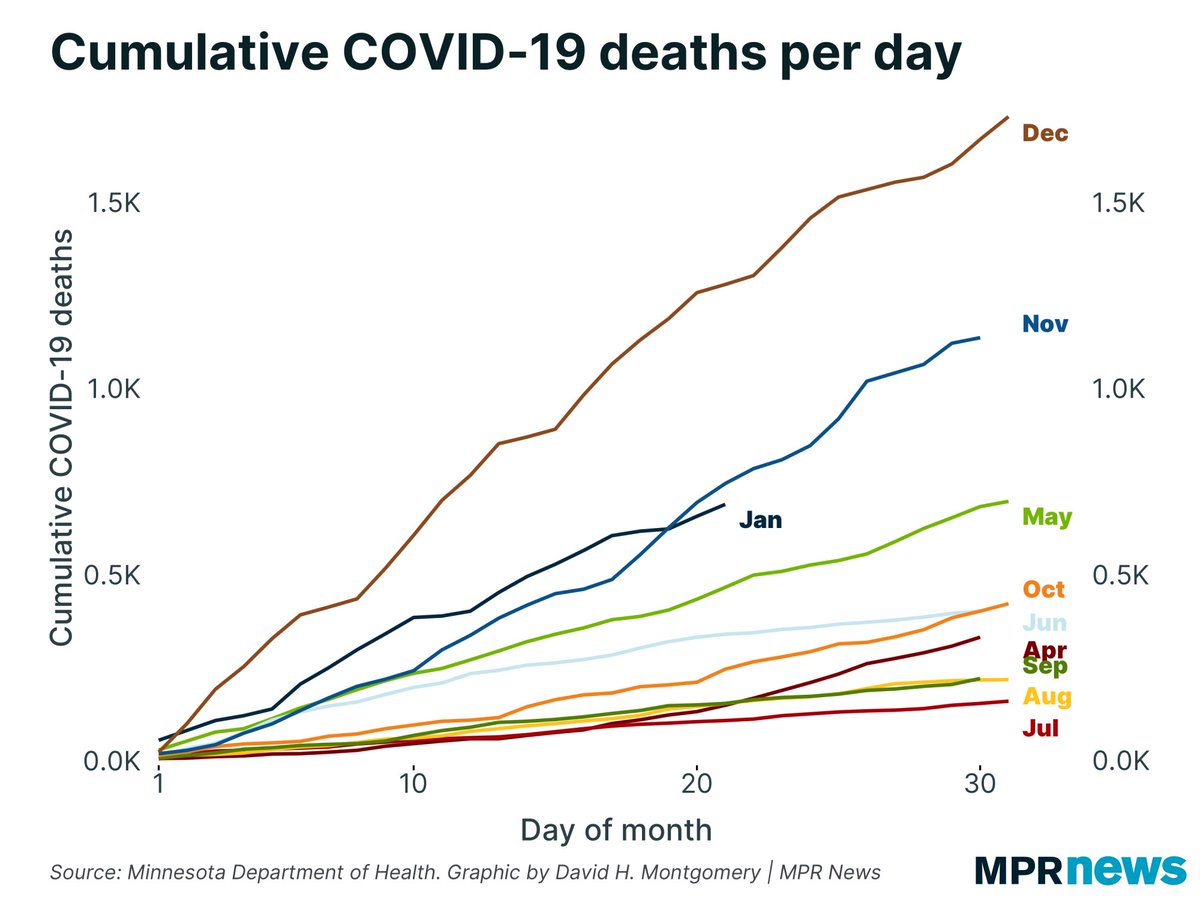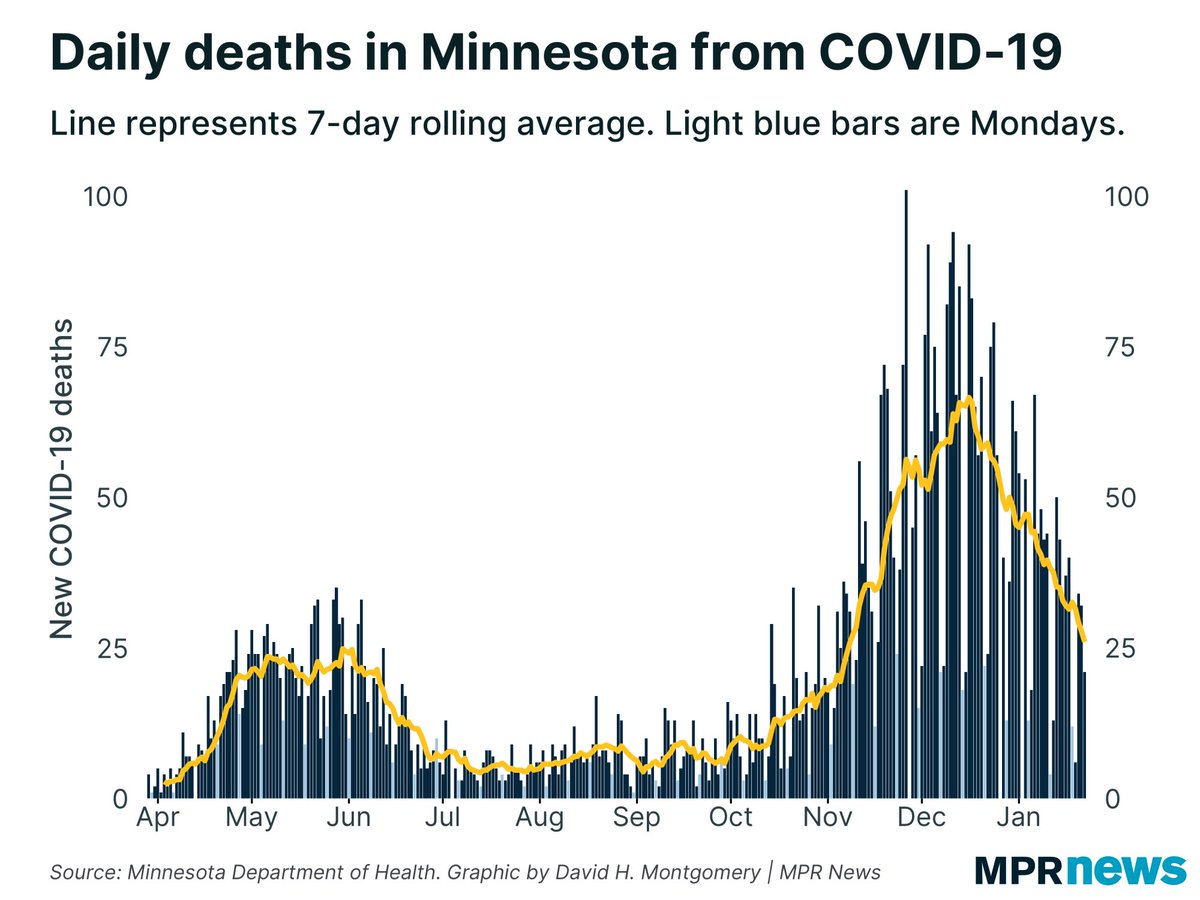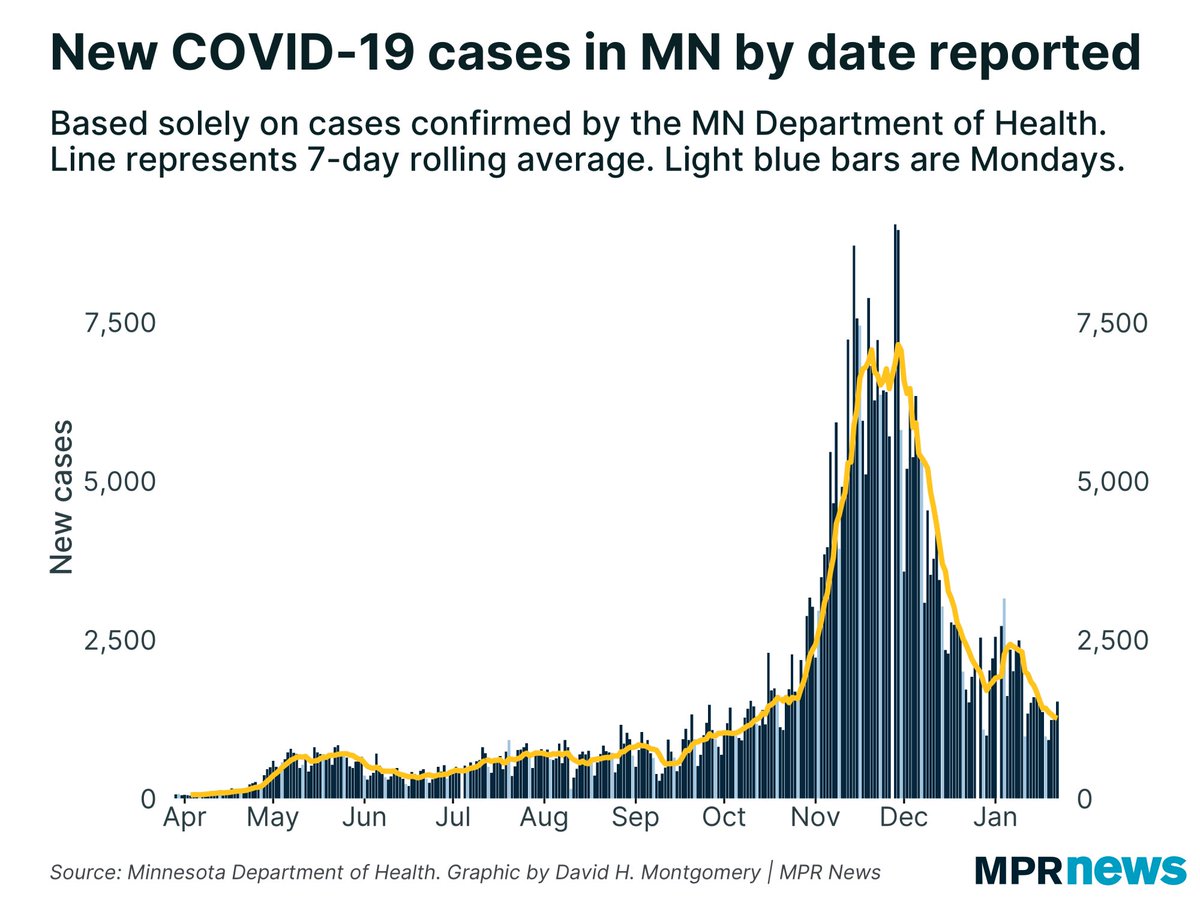
As of today, Minnesota has reported more than 6,000 #COVID19 deaths.
Tomorrow, January will probably pass May as Minnesota's third-deadliest month of the pandemic so far. But we’ve fallen behind the pace of deaths in November (when deaths were rising, not falling as they are now): 

Minnesota has averaged about 28 #COVID19 deaths per day over the past week. That compares to an average of 35 deaths/day last Thursday.
For context, on Nov. 1, MN was averaging 18 COVID deaths/day. On Oct. 1, 9/day.
For context, on Nov. 1, MN was averaging 18 COVID deaths/day. On Oct. 1, 9/day.

#COVID19 death rates have been falling both in and out of long-term care settings, but both remain elevated above the death rates we saw over the summer. 

#COVID19 cases also continue to decline, down to an average of 1,280 cases/day: 

Though testing volume has been on the decline, the fall in cases holds true even if you adjust for testing volume. The positivity rate is down to 4.4%, the lowest since Oct. 5. 

#COVID19 hospital admission rates have also been falling. It’s unclear if ICU admissions might be bottoming out at around 10/day, the level we saw for most of the summer. I’ll keep monitoring. 

In worse news, Minnesota’s #COVID19 vaccination pace has actually been SLOWING.
It’s possible the aparent *decline* shown here is due to reporting issues. The bigger issue is that the vaccination pace isn’t RISING, since it’s too slow at present.
It’s possible the aparent *decline* shown here is due to reporting issues. The bigger issue is that the vaccination pace isn’t RISING, since it’s too slow at present.

To vaccinate most of the adult population in a reasonable period of time, Minnesota needs to be administering at least 4 times as many shots per day. 

One metric I’m watching: the share of Minnesota’s new #COVID19 cases who are health care workers.
With health care workers getting vaccinated, we’d EXPECT this line to start falling soon, right? No sign of it yet.
With health care workers getting vaccinated, we’d EXPECT this line to start falling soon, right? No sign of it yet.

That said, you’ll notice that big dip in November? That wasn’t because fewer health care workers were getting sick, it was because more of everyone else was. So this chart only tells you so much.
• • •
Missing some Tweet in this thread? You can try to
force a refresh








